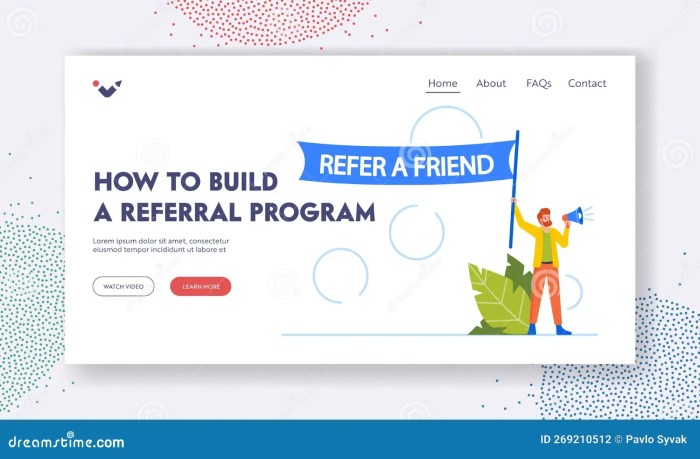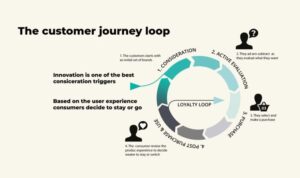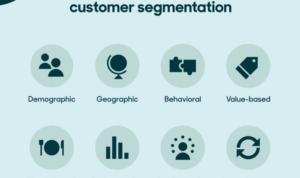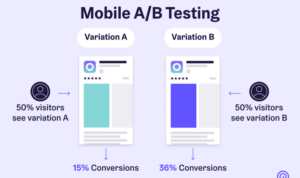Building a Referral Program sets the stage for this enthralling narrative, offering readers a glimpse into a story that is rich in detail with American high school hip style and brimming with originality from the outset.
Referral programs play a vital role in business growth, utilizing word-of-mouth marketing to acquire new customers and boost engagement. Let’s dive into the key components and strategies that make these programs successful.
Importance of Referral Programs
Referral programs are crucial for businesses as they provide a cost-effective way to acquire new customers through the recommendations of existing satisfied customers. This form of marketing leverages word-of-mouth to build credibility and trust, leading to higher conversion rates and customer retention.
Examples of Successful Companies
- Dropbox: Dropbox’s referral program offered free storage space to users who referred friends, leading to a 60% increase in sign-ups.
- Uber: Uber’s referral program rewarded both the referrer and the referee with ride credits, contributing to their rapid growth.
- Airbnb: Airbnb’s referral program incentivized users to invite friends by offering travel credits, expanding their user base significantly.
Benefits of Word-of-Mouth Marketing, Building a Referral Program
- Trustworthiness: Recommendations from friends or family are highly trusted, increasing the likelihood of conversions.
- Cost-Effective: Referral programs are more affordable than traditional marketing strategies and have a higher ROI.
- Increased Customer Loyalty: Customers acquired through referrals tend to be more loyal and have a higher lifetime value.
Acquiring New Customers through Referral Programs
Referral programs can help in acquiring new customers by tapping into the existing network of satisfied customers who are more likely to advocate for the brand. By incentivizing referrals and making it easy for customers to share, businesses can expand their customer base organically and sustainably.
Designing a Referral Program: Building A Referral Program

Referral programs are a powerful tool for businesses to grow their customer base through word-of-mouth marketing. When designing a successful referral program, there are key components to consider to ensure its effectiveness.
Key Components of a Successful Referral Program
- Clear and Simple Messaging: Make it easy for participants to understand the program and how it works.
- Attractive Incentives: Offer rewards that are valuable and appealing to both the referrer and the referee.
- Easy Sharing Options: Provide multiple channels for sharing referrals, such as email, social media, or personalized links.
- Tracking and Analytics: Implement a system to track referrals and measure the success of the program.
Different Types of Incentives
- Cash Rewards: Offering monetary incentives like discounts, cash bonuses, or gift cards.
- Product Discounts: Providing discounts on future purchases for both the referrer and referee.
- Exclusive Access: Giving access to exclusive products, services, or events for successful referrals.
- Points System: Rewarding points that can be redeemed for various rewards based on the number of successful referrals.
Importance of Setting Clear Goals
Setting clear goals for a referral program is essential to track its success and ensure it aligns with the overall business objectives. Clear goals help in measuring the program’s effectiveness, identifying areas for improvement, and optimizing the referral process for better results.
Creating a Seamless User Experience
- Simple Referral Process: Make it easy for users to refer friends by providing a straightforward and user-friendly referral process.
- Mobile Optimization: Ensure the referral program is accessible and optimized for mobile devices to reach a wider audience.
- Personalization: Tailor the referral experience to each user by offering personalized messages, rewards, and incentives.
- Follow-Up Communication: Keep participants informed about the status of their referrals and provide updates on rewards or incentives.
Implementing a Referral Program

Launching a referral program effectively is crucial for maximizing customer engagement and driving growth. Here are the key steps to get you started on the right track:
Steps to Launch a Referral Program Effectively
- Define Clear Objectives: Clearly Artikel what you want to achieve with your referral program, whether it’s increasing sales, expanding your customer base, or boosting brand awareness.
- Select Incentives Wisely: Choose rewards that are attractive to both existing customers and their referrals, ensuring they are motivated to participate.
- Create User-Friendly Processes: Make it easy for customers to refer others by providing simple and intuitive ways to share the program.
- Promote Across Channels: Utilize multiple marketing channels to reach a wider audience and encourage more referrals.
Tips on Promoting the Referral Program to Existing Customers
- Send Personalized Invitations: Reach out to your existing customers with personalized messages inviting them to join the referral program.
- Highlight Benefits: Clearly communicate the benefits of participating in the program, such as exclusive discounts, rewards, or early access to new products.
- Create Excitement: Generate excitement around the program by running limited-time promotions or contests to incentivize participation.
Role of Tracking and Analyzing Referral Program Data
- Monitor Performance: Track referral program performance metrics such as conversion rates, customer acquisition cost, and ROI to assess the program’s effectiveness.
- Analyze Customer Behavior: Use data insights to understand customer behavior, preferences, and trends to optimize the program for better results.
- Identify Opportunities: Identify opportunities for improvement or expansion based on the data collected to continuously enhance the referral program.
Strategies for Maximizing Participation and Engagement in the Program
- Offer Tiered Rewards: Implement a tiered reward system where customers can earn more incentives for referring multiple friends or making repeat referrals.
- Encourage Social Sharing: Integrate social sharing buttons into your referral program to make it easy for customers to share with their network.
- Provide Regular Updates: Keep participants engaged by sending regular updates, new offers, and reminders to continue referring others.
Measuring Success of a Referral Program
Referral programs are a powerful tool for businesses to acquire new customers and increase sales. However, to ensure the success of a referral program, it is essential to track key metrics, calculate ROI, and optimize through A/B testing.
Key Metrics to Track
- Number of Referrals: Tracking the total number of referrals generated through the program.
- Conversion Rate: Calculating the percentage of referrals that convert into paying customers.
- Customer Lifetime Value (CLV): Understanding the long-term value of customers acquired through referrals.
- Cost per Acquisition (CPA): Determining the cost of acquiring a new customer through the referral program.
Calculating ROI
ROI (Return on Investment) can be calculated by subtracting the total costs of the referral program from the total revenue generated through referrals, and then dividing by the total costs. The formula is:
(Total Revenue – Total Costs) / Total Costs
Importance of A/B Testing
A/B testing involves creating two versions of a referral program (A and B) to test which one performs better. By testing different elements such as incentives, messaging, or design, businesses can optimize their referral program for maximum results.
Successful Referral Program Campaigns
- Dropbox: Dropbox’s referral program offered additional storage space to users who referred friends. This resulted in a 60% increase in sign-ups.
- Uber: Uber’s referral program rewarded both the referrer and the referee with credits, leading to rapid user growth and increased usage of the platform.
- Airbnb: Airbnb’s referral program incentivized users to invite friends by offering travel credits. This strategy significantly boosted the number of bookings on the platform.





